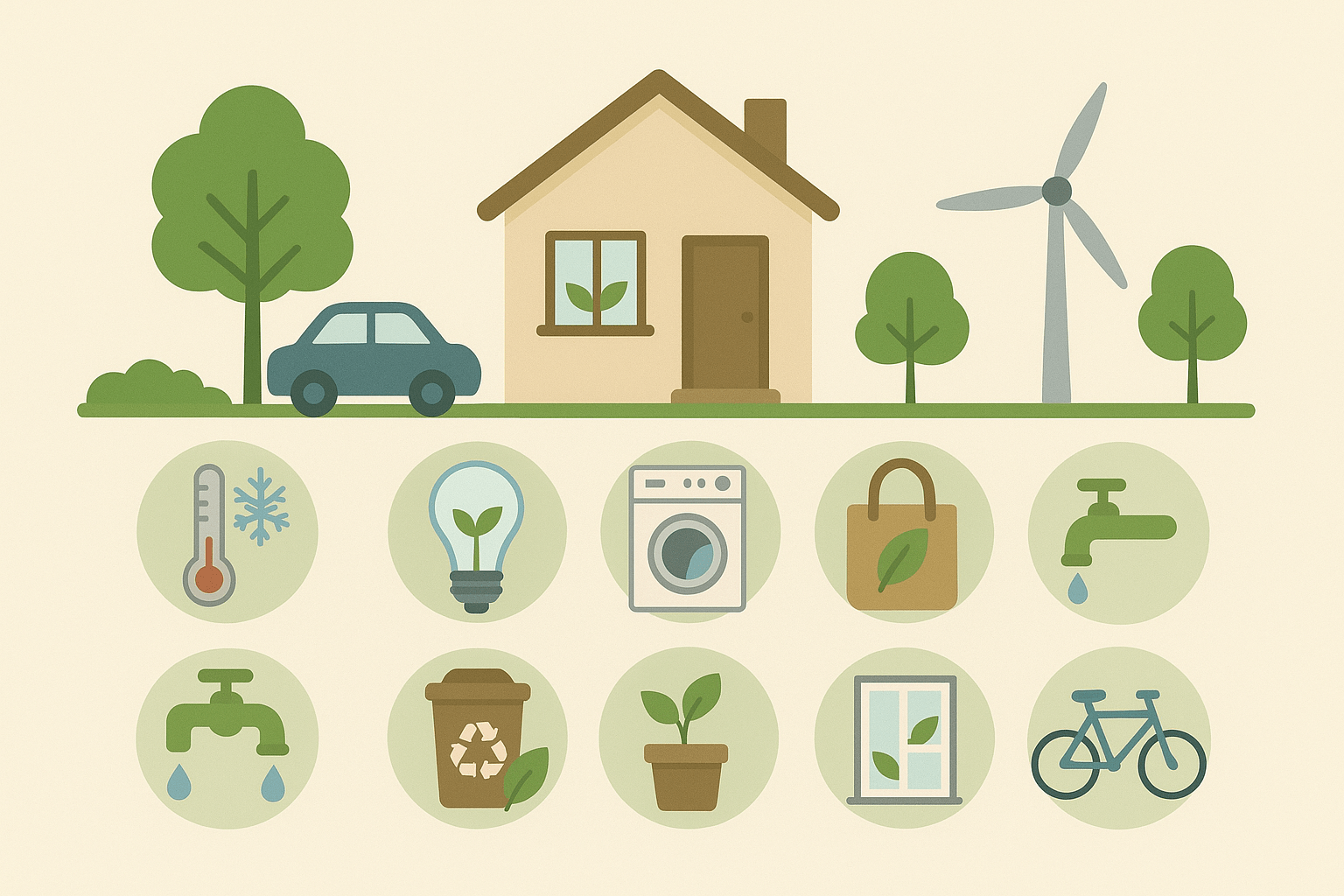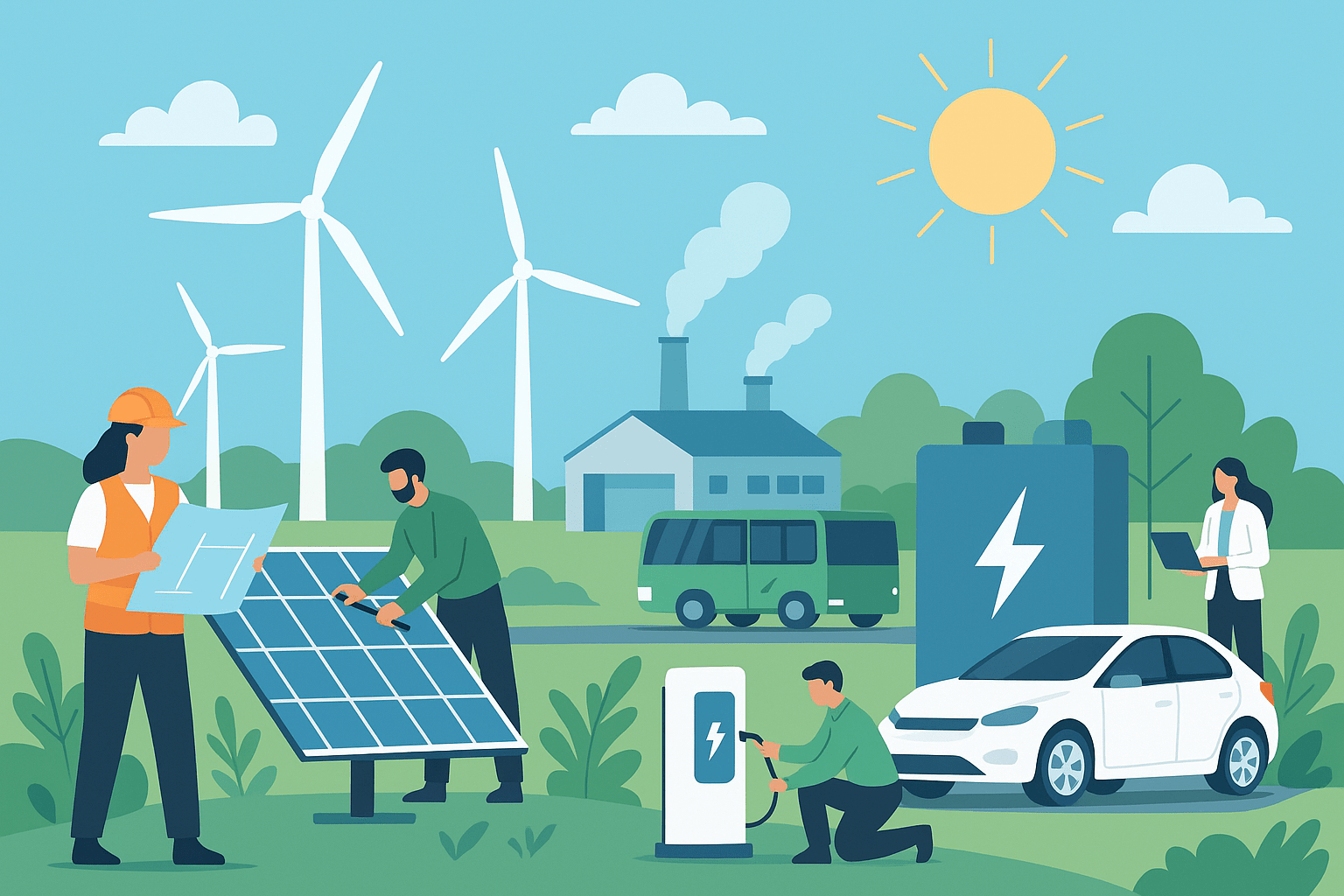Introduction
When I first reflected on my own carbon footprint, I realised how much everyday habits, things I barely thought about, were adding up. While systemic change is crucial, the power of small, consistent actions in our homes can’t be underestimated. Here are ten practical, well-researched strategies to reduce your footprint at home, the kind of things I’ve tested, read about extensively, and want to share with you.
Why Focus on Home Carbon Footprint
- The residential sector is responsible for a significant share of global greenhouse gas emissions. arXiv
- Reducing emissions at home isn’t just good for the planet — many of these actions also cut your energy bills. For example, smart heating controls or improved insulation can dramatically save on energy costs. Energy Saving Trust
Many changes are low-cost or even free, making sustainable living accessible to everyone. For those looking to upgrade their home efficiently, check out the best energy-saving appliances on Amazon — a simple way to save energy while supporting eco-friendly choices.
1. Unplug Electronics & Use Smart Power Strips
One of the easiest but most overlooked ways to reduce emissions is to stop “phantom” energy consumption. Many devices (TVs, chargers, kitchen appliances) continue to draw power when plugged in, even if turned off. ESPC
- Use smart power strips or unplug devices when not in use.
- This small change can cut a significant portion of your electricity waste.
2. Switch to LED Lighting
Swapping out incandescent or CFL bulbs for LED lights is simple, yet hugely effective. According to the Energy Saving Trust, LEDs consume up to 90% less energy than traditional bulbs. Energy Saving Trust
- Use motion sensors or timers to make lighting usage even more efficient. envirocarecentral
- Over time, this reduces both your power bill and CO₂ emissions.
3. Optimize Heating & Cooling
Heating and cooling often account for the largest share of a household’s energy consumption. Here’s what helps:
- Lower your thermostat by 1 °C — this has been shown to reduce heating demand significantly. ESPC
- Invest in smart thermostats or heating controls (thermostatic valves, timers, app‑based programmers). Energy Saving Trust
- Keep radiators bled, and seal drafts (windows, doors) to avoid heat loss. ESPC

4. Use Less Hot Water
Hot water demands a lot of energy, so reducing its usage is a quick win for cutting your footprint.
- Take shorter showers instead of baths. ESPC
- Fix leaky faucets — one dripping tap wastes a surprising volume of water over time. ESPC
- Run your washing machine or dishwasher only when full. Energy Saving Trust
- Lower your water heater temperature to around 120 °F (≈ 49 °C) — many heaters are set much higher than necessary. cleanchoiceenergy.com
5. Choose Energy-Efficient Appliances
When it's time to replace your appliances, consider energy ratings:
- Look for ENERGY STAR (or equivalent) certified models. envirocarecentral
- Use “eco mode” or energy-saving settings on your appliances whenever possible. Energy Saving Trust
- High-efficiency appliances may cost more upfront, but they save money (and carbon) in the long run.
6. Reduce, Reuse, Recycle — and Compost
Waste matters. Reducing what you throw away helps minimize methane emissions from landfills and reduces the carbon cost of producing new goods.
- Sort and recycle rubbish: plastic, paper, metal, glass — follow your local recycling rules. envirocarecentral
- Compost food scraps (peels, coffee grounds, vegetable leftovers) to cut waste and enrich your garden. envirocarecentral
- Use reusable items: bags, bottles, containers — these small lifestyle shifts really add up. Cambridge Blog
7. Eat Smarter
Your food choices have a surprisingly large impact on your carbon footprint.
- Reduce meat (especially red meat) consumption — even a few “meat-free” days per week helps. ESPC+1
- Choose local and seasonal produce. This reduces “food miles” and supports more sustainable agriculture. ESPC
- Plan meals and use leftovers — minimizing food waste saves energy in both production and disposal. Harvest Green Developments
8. Grow Plants or Trees
Plants not only look nice — they absorb CO₂, cool your home naturally, and can even improve insulation.
- Plant trees strategically (e.g., south or west side) to shade your home in summer and block wind in winter. energyharbor.com
- Grow herbs, vegetables, or small shrubs in a garden or in pots if you don’t have a yard. Harvest Green Developments
- Indoor plants can help too — even small greenery makes a difference.
9. Use Water-Saving Fixtures
Simple plumbing upgrades can yield big savings in both water and energy.
- Install low-flow showerheads and faucets — you’ll use less hot water and reduce your water heating demand. Coldwell Banker Lingle
- Use dual-flush toilets if available — these help reduce the water used per flush. envirocarecentral
- Fix leaks quickly — dripping taps, running toilets, and old pipes can cost a lot of water (and thus energy).
10. Add Green Tech to Your Home
Integrating smart technologies is one of the most efficient ways to manage your energy and reduce your footprint.
- Use smart thermostats that learn your schedule and optimize heating/cooling. dwellin.com
- Plug in smart plugs to turn off standby power for devices. dwellin.com
- Consider solar panels if feasible: according to the Energy Saving Trust, a typical home solar system can save around 1 tonne of CO₂ per year. Energy Saving Trust
Bonus: Behavioural & Mindset Shifts
Beyond the tangible changes, some mindset shifts amplify impact:
- Track your energy use: Many apps and smart meters let you monitor consumption in real time.
- Set small, realistic goals: “This month, I’ll unplug electronics every evening” or “I’ll compost 50% of my kitchen scraps.”
- Share your journey: Talk to friends or family about these changes — collective action accelerates impact.

Well-Documented Data & Case Studies
- A London housing retrofit study found that upgrading insulation, windows, and lighting saved ~1,700 kg CO₂ per home per year , with a payback of around 11 years. arXiv
- Research into residential heating decarbonization shows how strategic policy and behavioral change could bring emissions from heating close to zero by 2050. arXiv
Conclusion: Why It’s Worth It
By committing to even a few of these changes — unplugging devices, installing LEDs, or growing a small garden — you're not just lowering your carbon footprint. You're also building a mindset of sustainability. Over time, these habits scale: they can influence your community, your household’s spending, and even your perspective on climate action.
If we all do a little, it really adds up!


